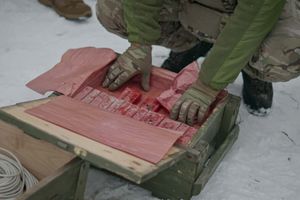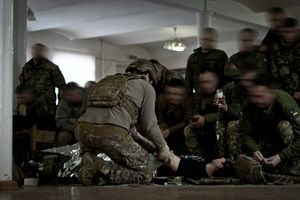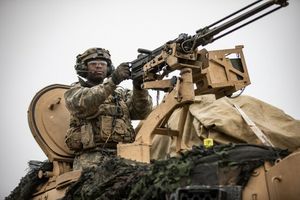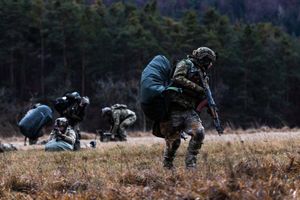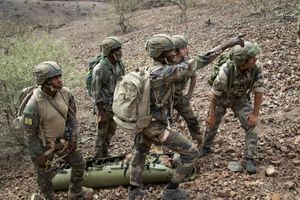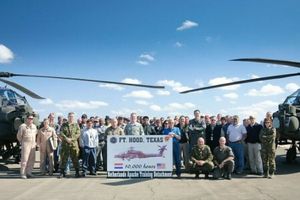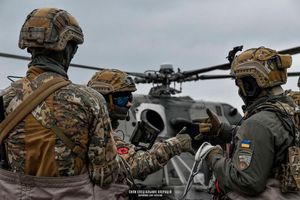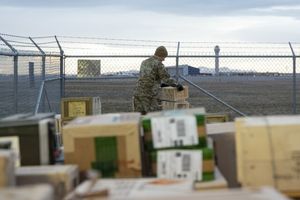Washington — In the past year, the Army incorporated joint service participation into Project Convergence 21, rolled out the service-wide migration to Army 365, adopted a new digital transformation strategy and delivered its new Hypersonics weapons system.
The Army News Service revisits some of the top modernization stories in 2021.
Project Convergence 21
The Army took the next step toward augmenting its joint, all-domain operations capabilities in Project Convergence 21, which concluded in November.
Project Convergence 21, which was held at Yuma Proving Ground, Arizona, and White Sands Missile Range, New Mexico, had full joint participation, including the Space Force and the Navy.
The six-week series of exercises allowed for the evaluation of military technology strength to assess future capabilities the Joint Force may use. PC21 utilized the joint network to connect sensors to shooters on the ground.
PC21 demonstrated that the joint network will need to be resilient and able to move large volumes of data from the tactical edge to the enterprise. In addition, PC21 demonstrated the need to take a data-centric approach rather than the legacy weapons platform-centric approach to development.
There were approximately 1,500 service members and civilians who participated in PC21, making it the largest joint force experiment conducted in 15 years.
Army 365
In 2021, the Army rolled out a total Army-wide migration to Army 365. The transition to Army 365 is part of the larger DOD initiative to move to cloud-based capabilities that allow the total force to access information any time from any location.
Army 365 hosts a range of resources including video and voice teleconferencing, email, instant messaging and access to shared drives.
The system provides a cloud-based capability, which bolsters collaboration and connectivity. Before, documents and projects had to be sent through email.
Now, through Army 365, users can make direct corrections or share the document in a secure space, chat about it, and even discuss it via teleconference, all on the same platform.
The COVID-19 pandemic and the resultant need for much of the workforce to work from home forced the DOD and the Army to provide the workforce with a cloud-based capability to collaborate and communicate with each other from remote workstations. Army 365 also has the added benefit of being more secure to use than previous platforms. The cloud-based platform increases cybersecurity and defensive cyberspace operations by using a standard version of software that is constantly updated and reduces the attack surface of the network.
Army Digital Transformation Strategy
The Army recently announced the release of its Army Digital Transformation Strategy in October. The strategy is designed to bring the Army to the future, using digital and advanced technology methods to gain an edge against adversaries. The ADTS provides unity of vision as well as unity of effort across the Army to support the Army’s modernization strategy.
The strategy aims to redefine and rework the Army’s culture to ensure that information and systems are ready for the digital battlespace.
Using cloud technology, the Army’s digital transformation will help improve data access and the flow of information to Soldiers on the ground. The strategy enables an Army of 2028 that delivers overmatch through multi-domain operations using innovative and transformative technologies and provides the framework for achieving WayPoint 2028 — the Army's plan for victory in multi-domain operations.
The Army also announced the release of its Unified Network Plan. The unified network is a central modernization effort for the Army and underpins everything within the ADTS.
The AUNP is an operational framework that aligns the Army’s modernization efforts at the enterprise, meaning strategic and operational levels, with the tactical network modernization so that the Army can enable multi-domain operations for the force by 2028.
Hypersonics
This fall, the Army delivered equipment for its first Long-Range, Hypersonic Battery to the I Corps’ 5th Battalion, 3rd Field Artillery Regiment, 17th Field Artillery Brigade at Joint Base Lewis-McChord, Washington.
This unit is a testing unit and will allow Soldiers to train with new systems, become familiar with long-range fires operations and provide feedback on improvements. The Long-Range Hypersonic Weapon, which is capable of hitting high-value targets at great distances, is comprised of four transporter launchers, a battery operations center, and modified trucks and trailers.
The LRHW is fast, accurate, maneuverable, long-range missiles, which can be launched from mobile ground platforms, also serves as a deterrent to potential adversaries.
Long range precision fires, one of six Army modernization priorities, is part of the Army modernization efforts, which aims to transform the Army into a multi domain force.
Source: https://www.army.mil/article/252962/year_in_review_army_moves_closer_to_fielding_hypersonic_weapon_expands_scale_of_project_convergence_21
Author: Michael Reinsch, Army News Service







































































































































































